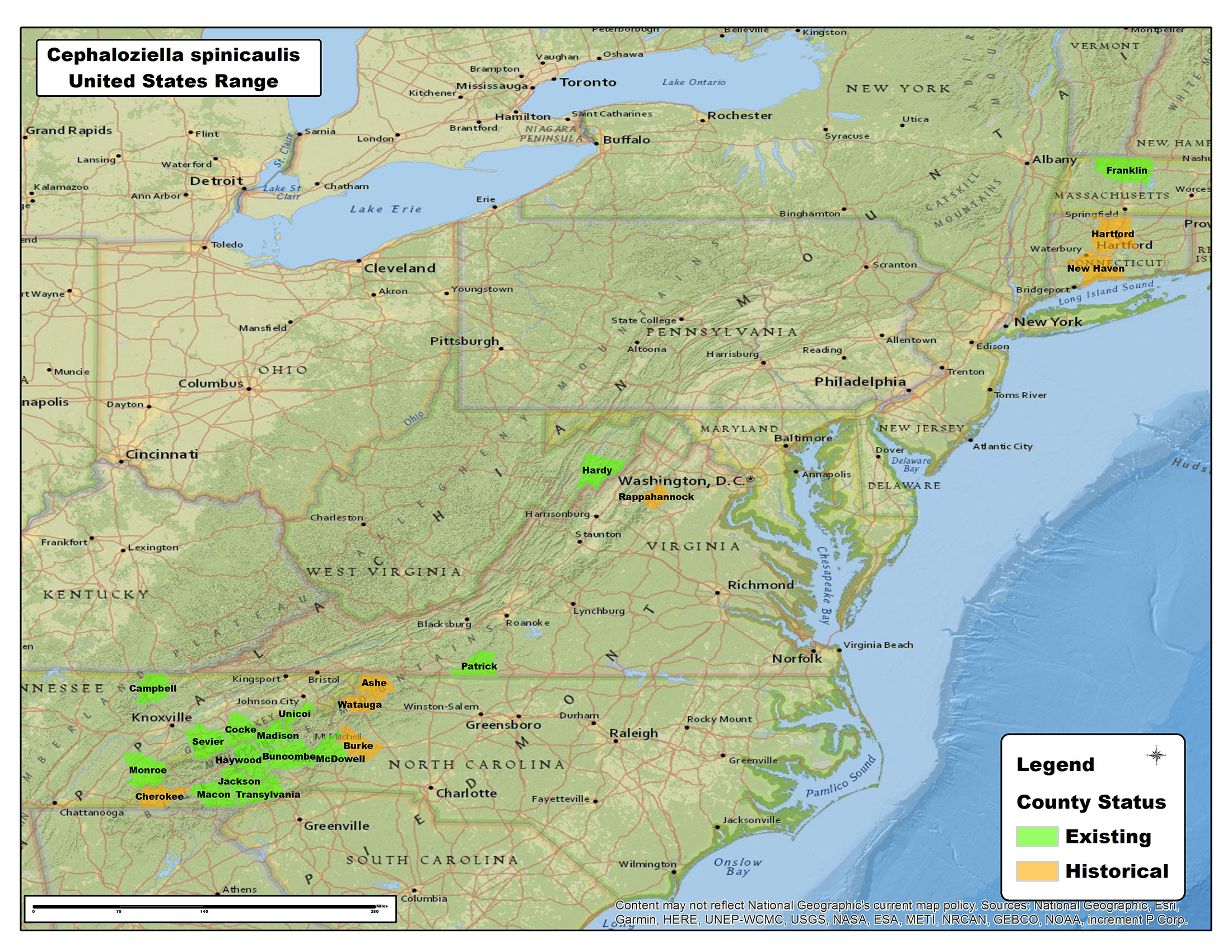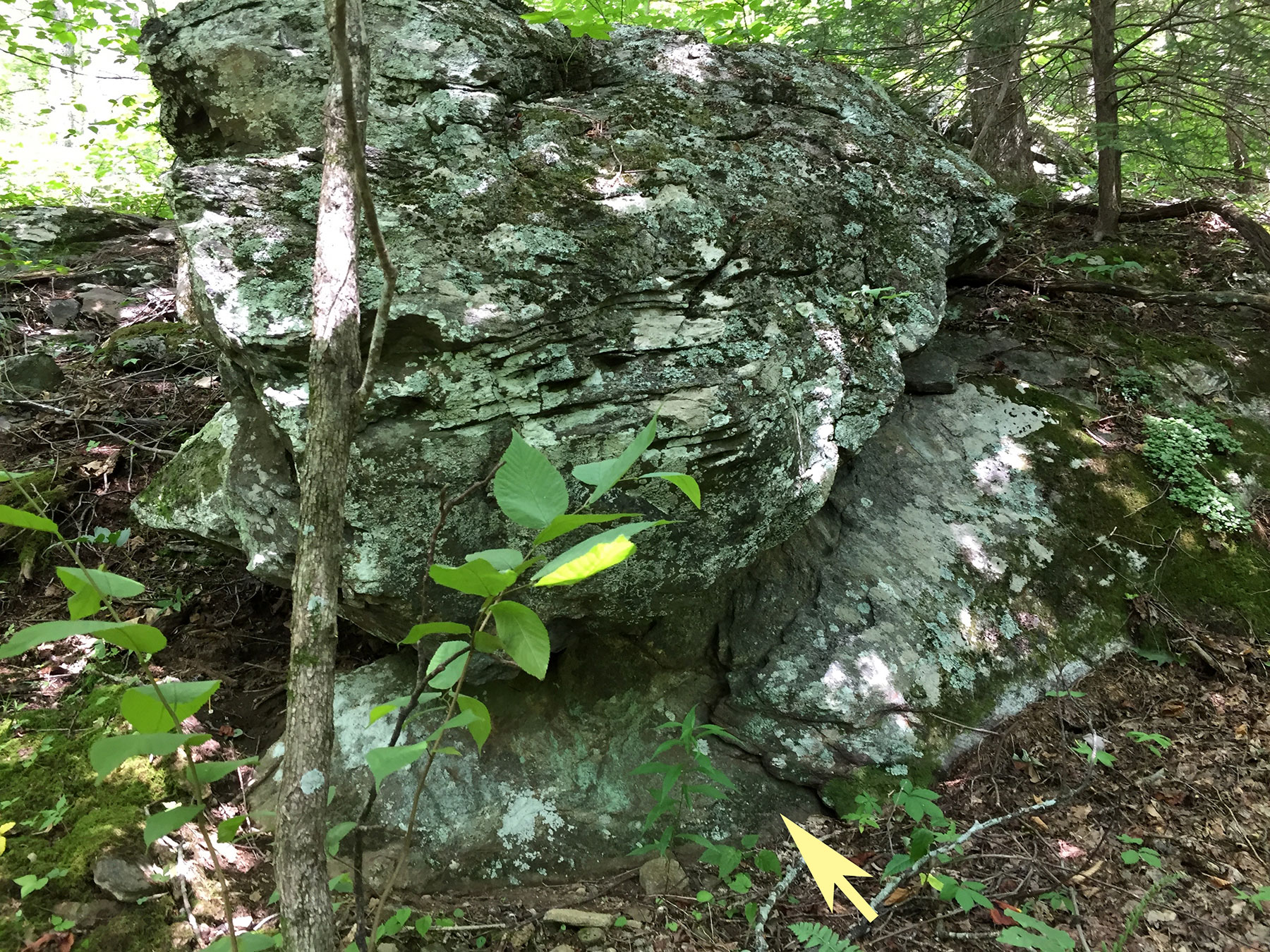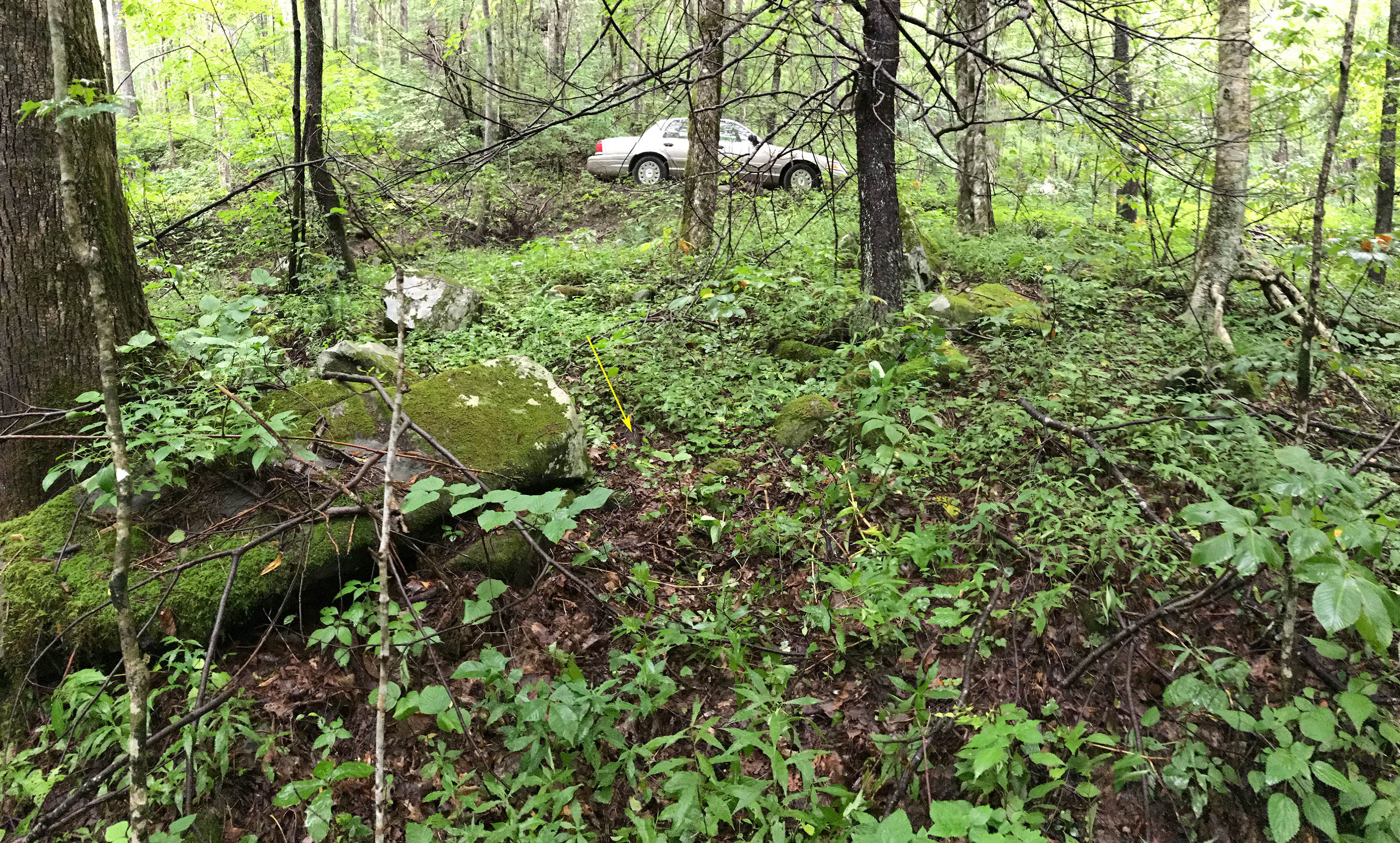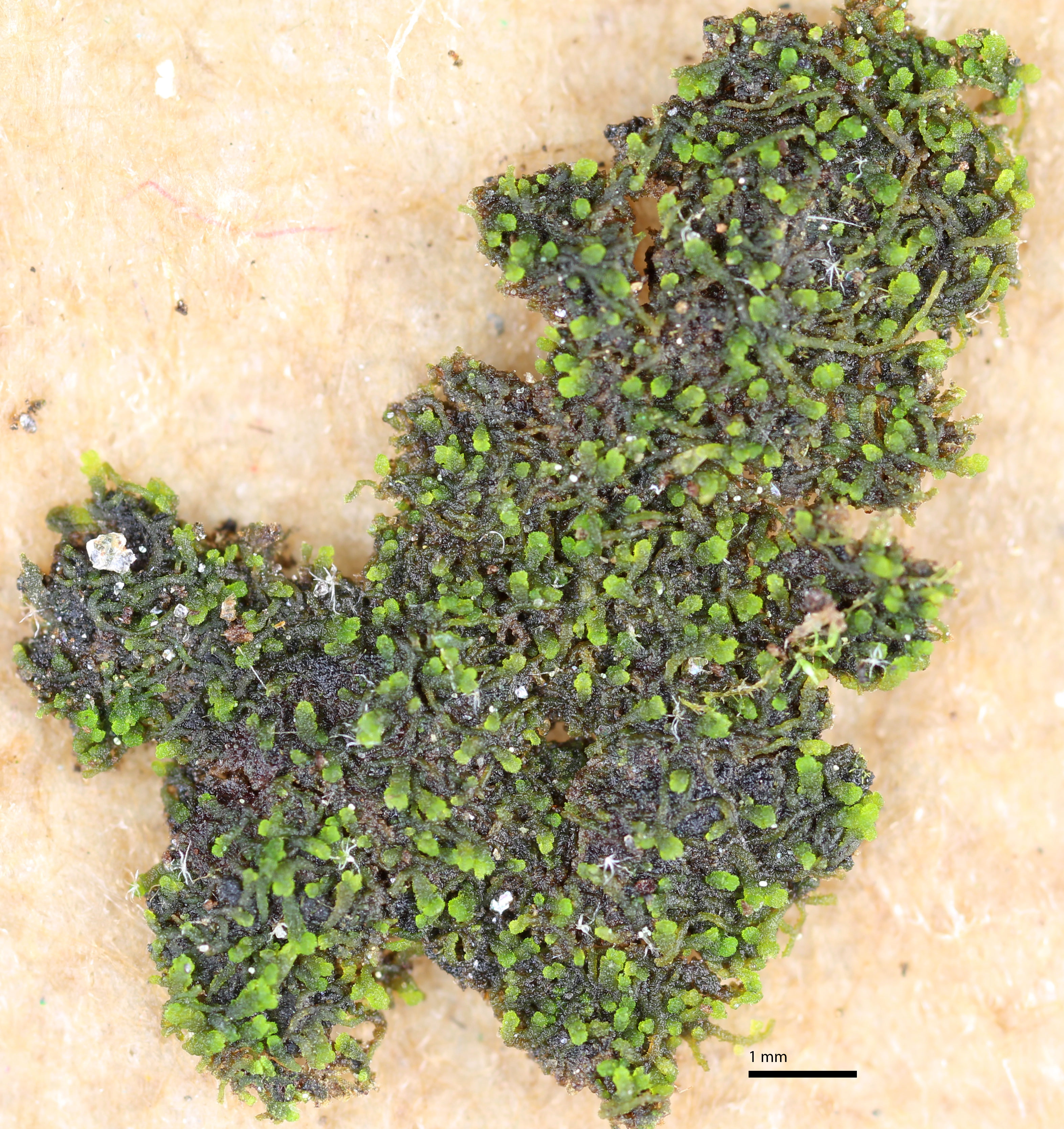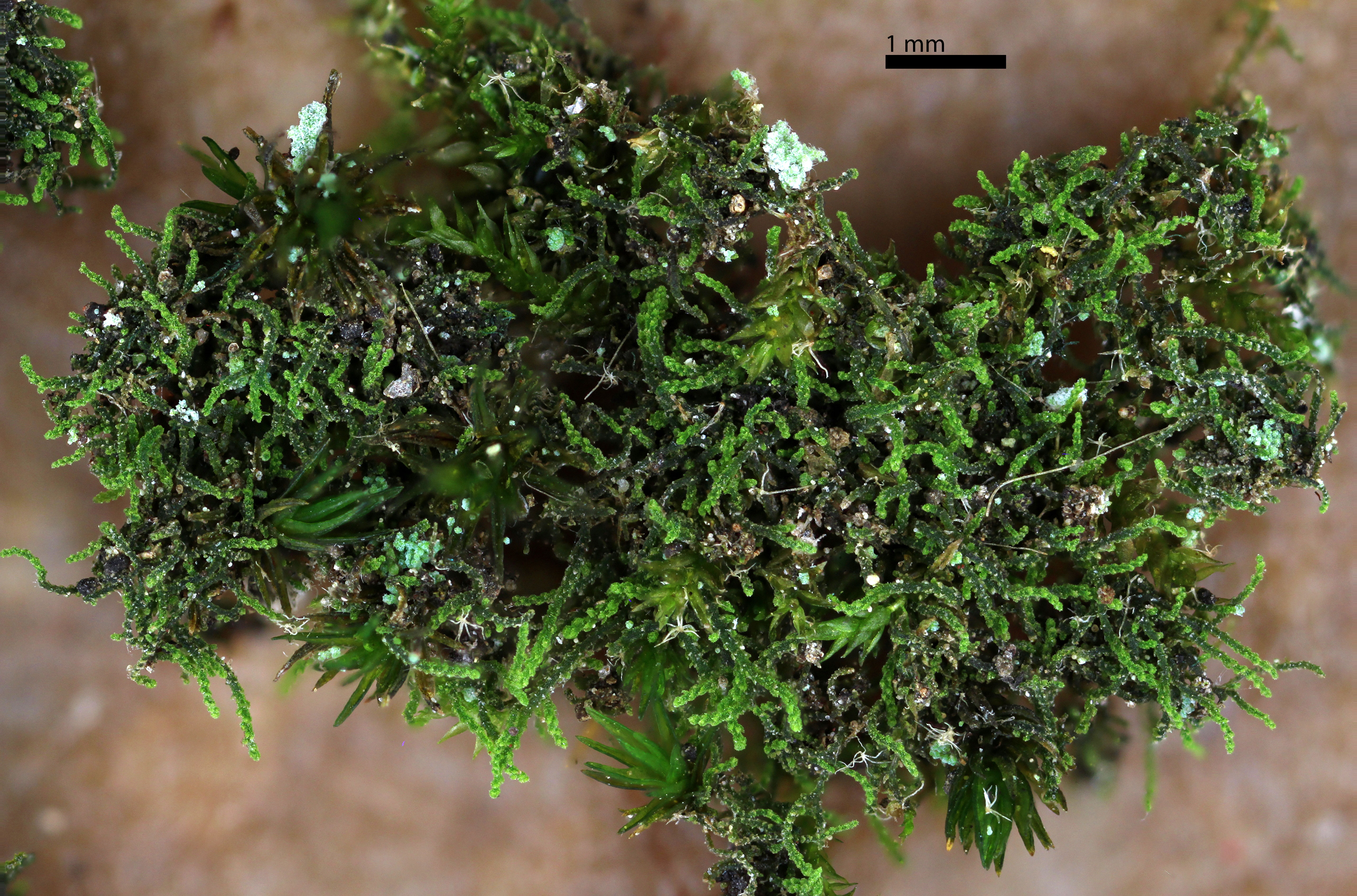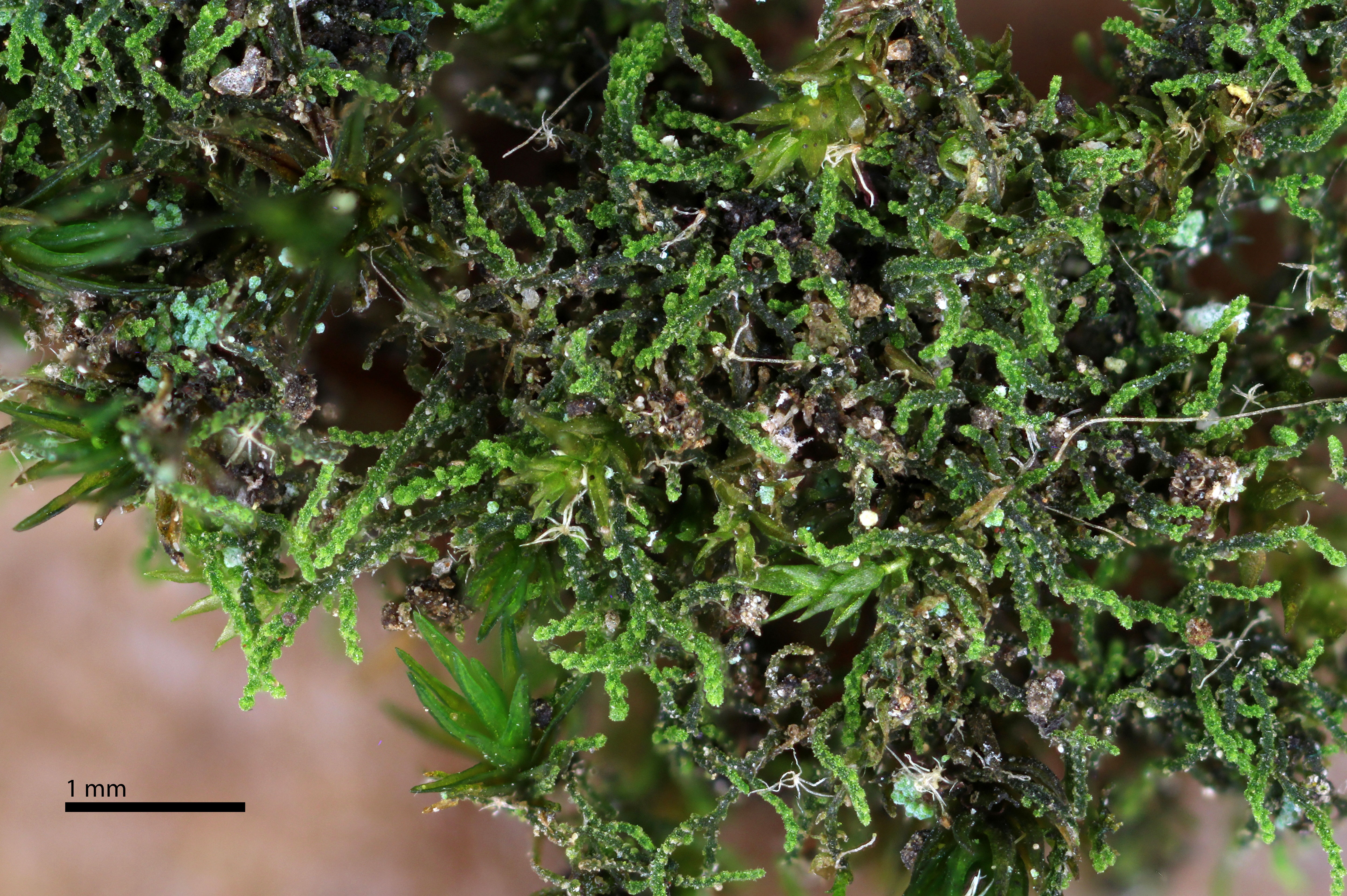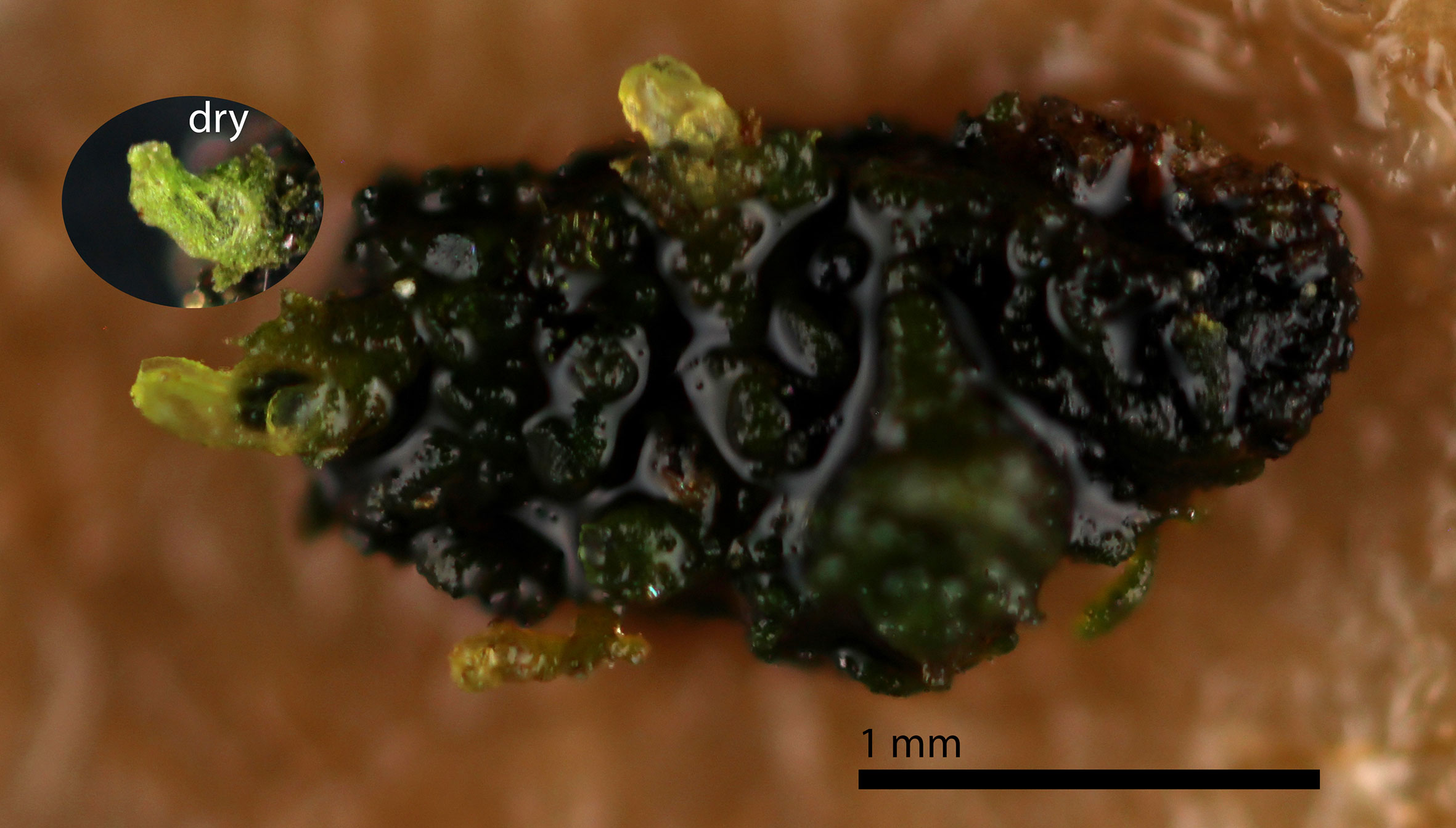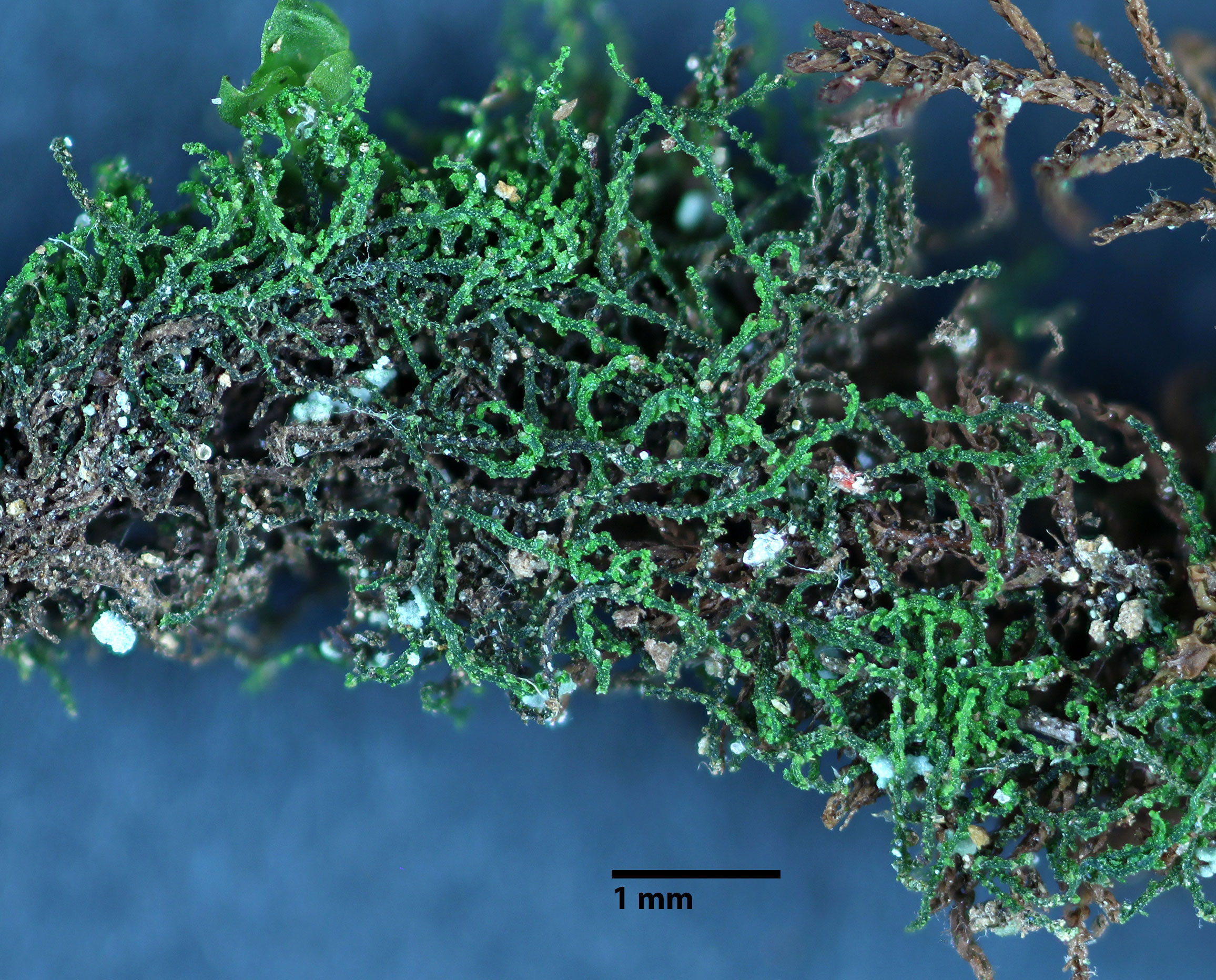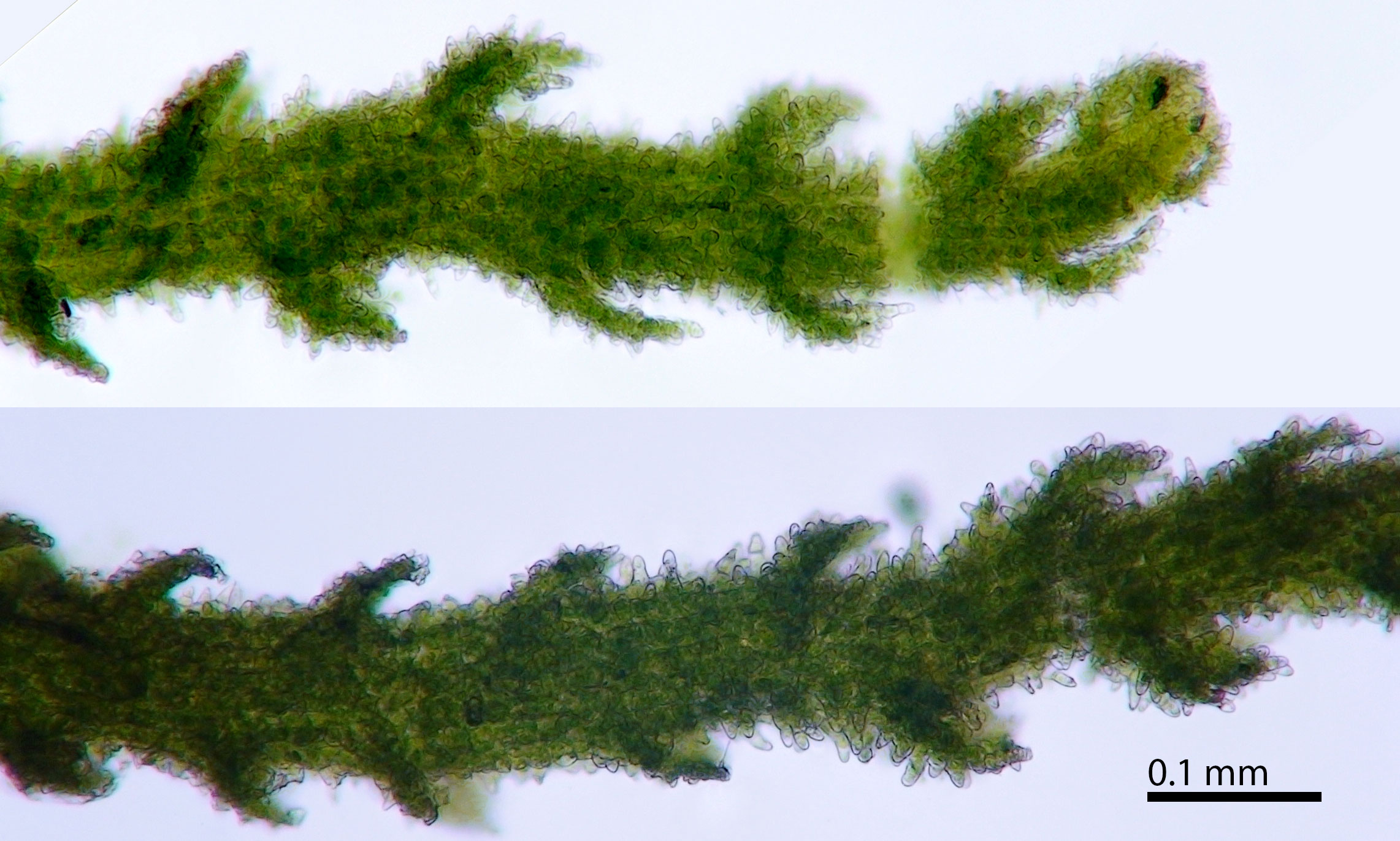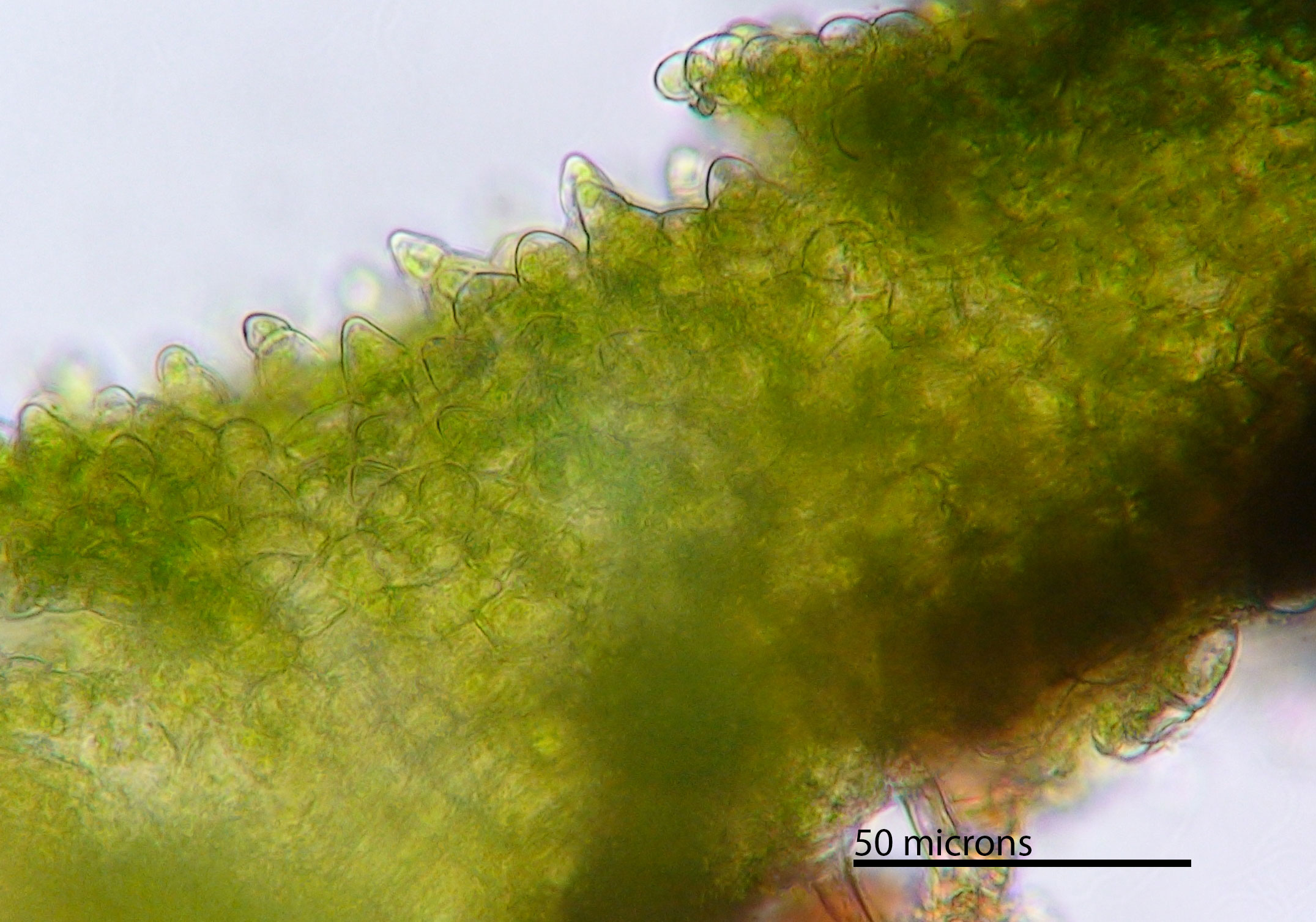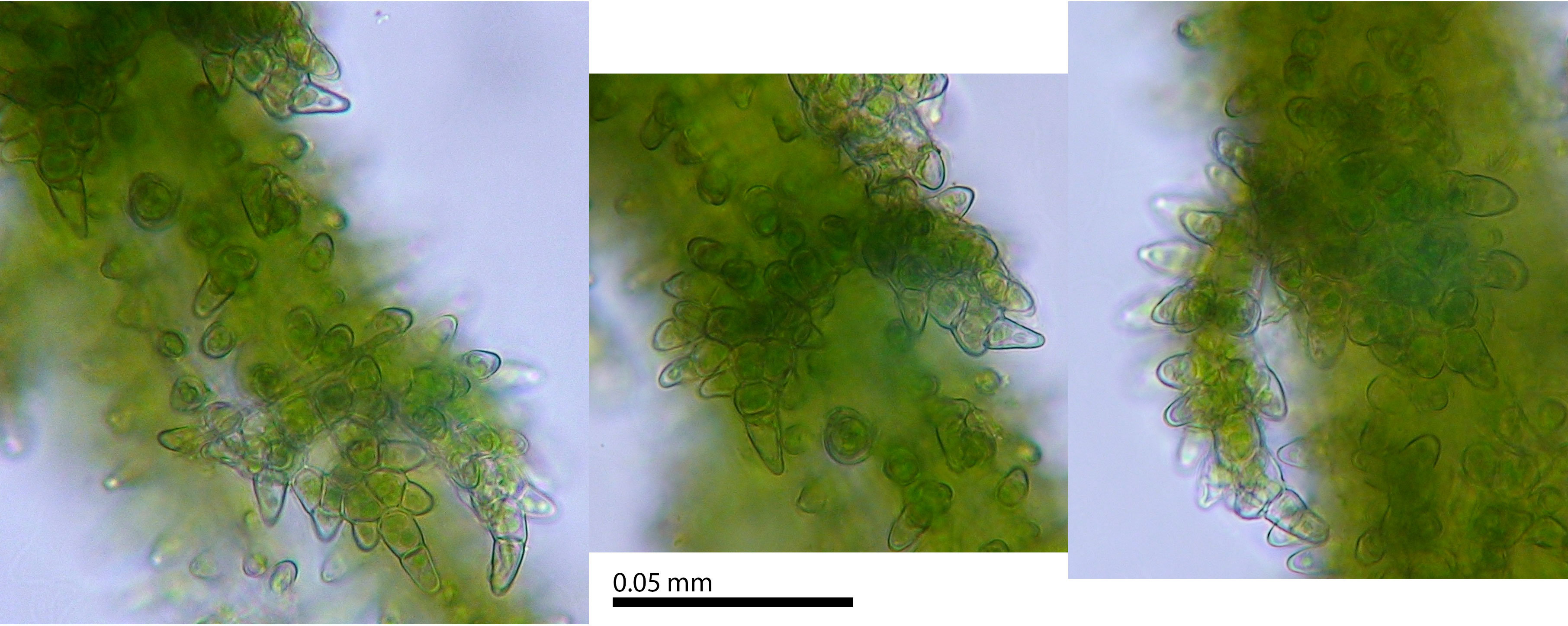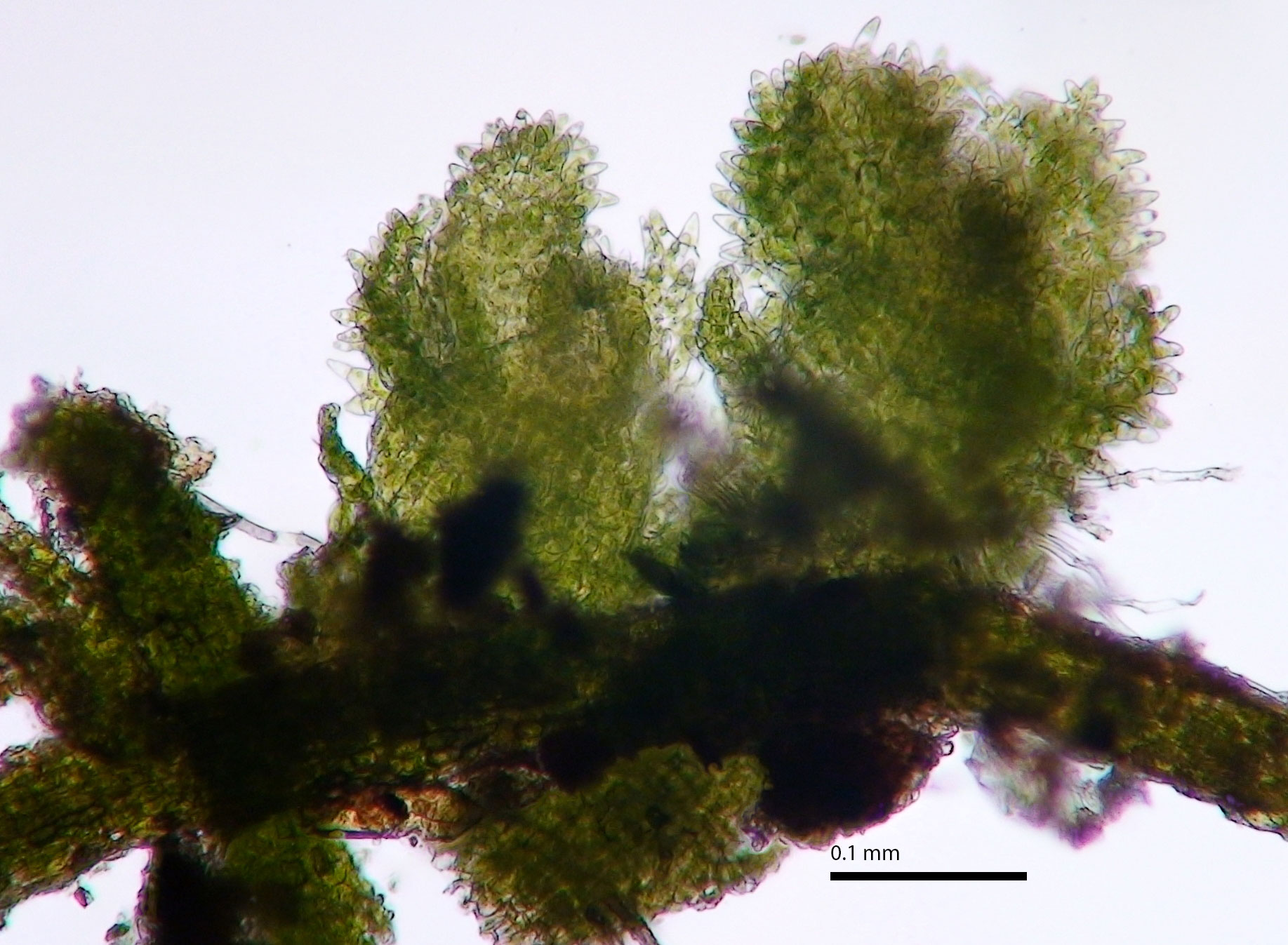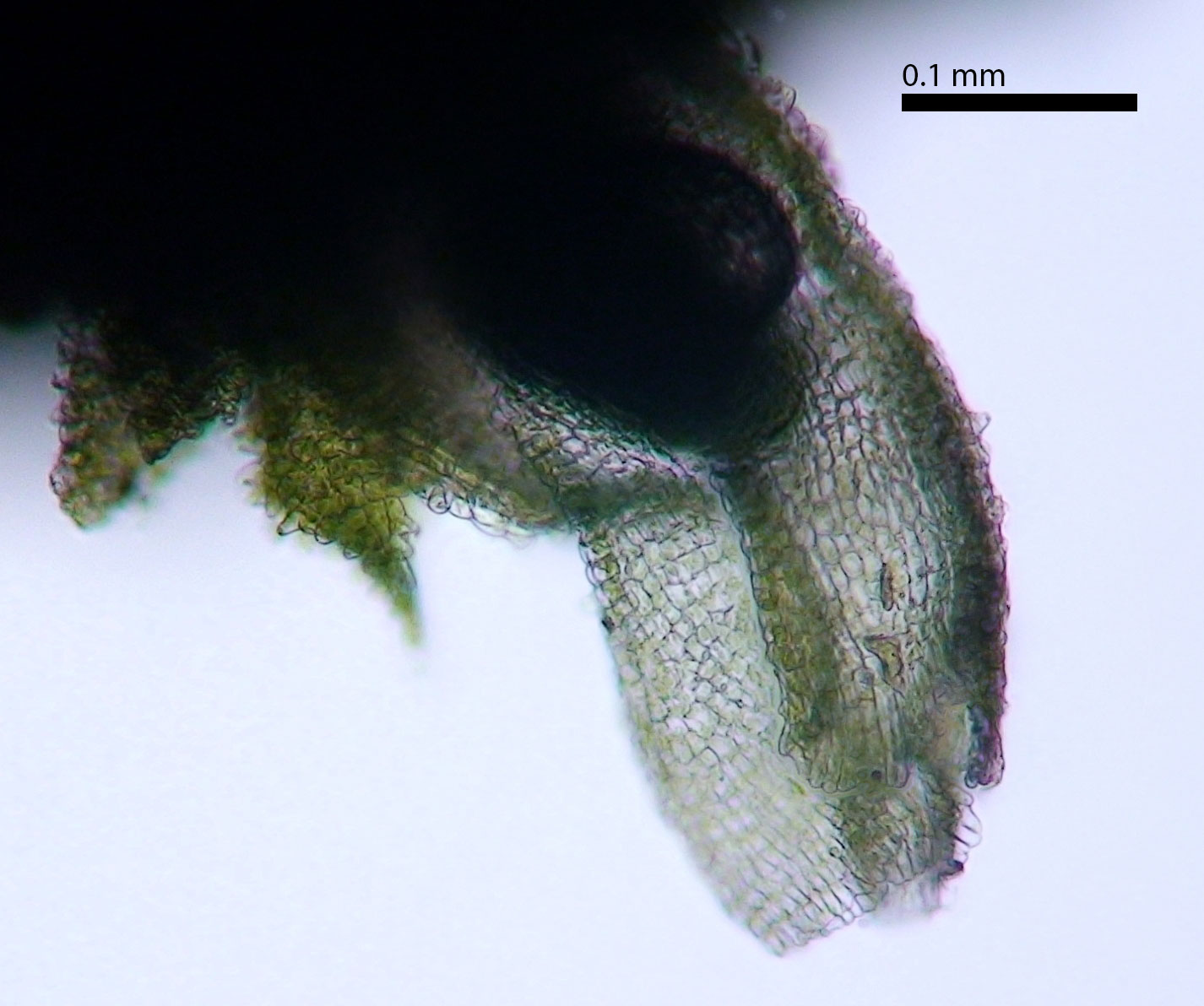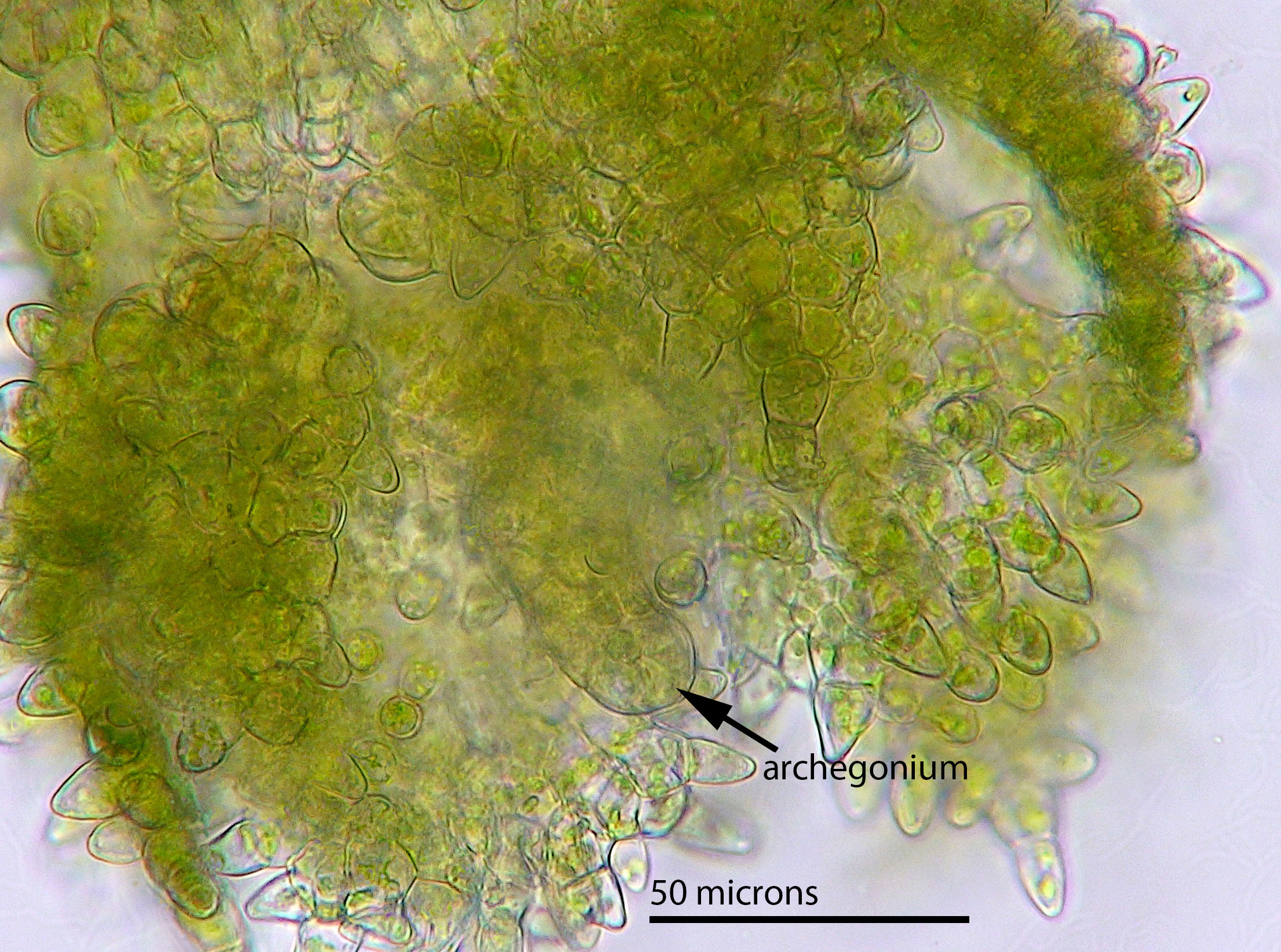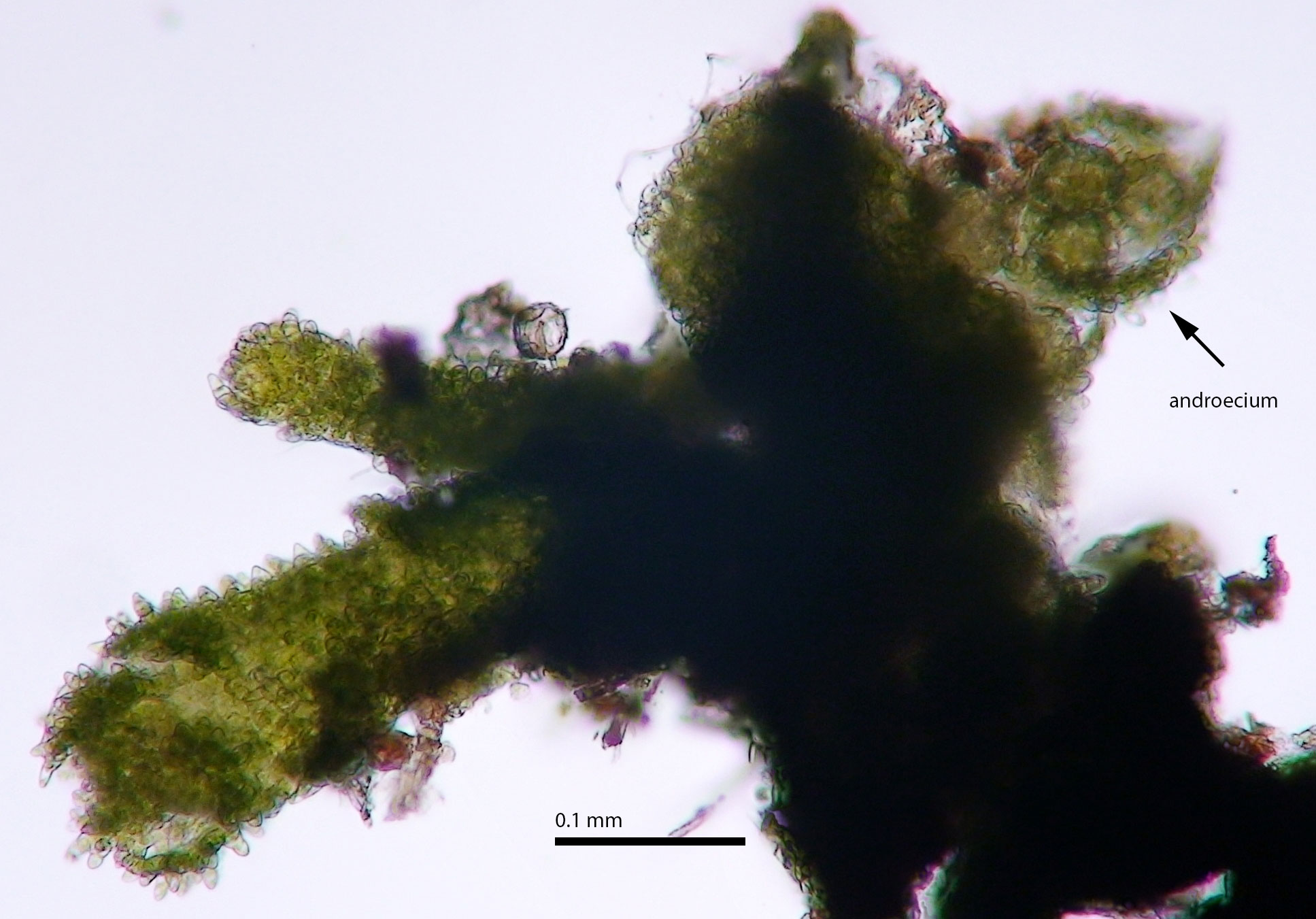Cephaloziella spinicaulis Douin
Family: Cephaloziellaceae
Synonyms
none recent
NatureServe Conservation Status
G3G4
Distribution
Eastern North America. U.S.A. (Connecticut, Massachusetts, North Carolina, Tennessee, Virginia, West Virginia. [bryophyteportal.org]). Asia.
Habitat
In the Southern Appalachians “at elevations from 2000-5000 feet or more; chiefly restricted to oak-hickory, oak-hickory-chestnut, hemlock-hardwoods, and beech-maple forests” (Schuster 1980, p. 104). Cephalziella spinicaulis occurs on shaded rock (or thin soil over rock) along cliffs near mountain summits and also on low stones at ground level in humid forests on slopes. It often occurs within 100 feet of small streams and appears to be somewhat frequent in northern hardwood forests of the southern Appalachians. The substrate is typically damp to somewhat dry; the species is not typical of prolonged wet areas.
Brief Description and Tips for Identification
Immediately recognizable by 1) small, distant bi-lobed leaves; much of the stem is exposed, and 2) dull texture of the entire plant’s surface due to numerous cellular papillae covering stems and leaves. With a hand lens these features allow confident field identification due to the dull texture and seemingly near leafless stems. This is remarkable given that Cephaloziella is a difficult genus fraught with issues in demonstrating key features of described species. Cephaloziella species are tiny plants with shoots less than half a mm wide, stems hardly a tenth of a mm in diameter and only a few mm long. Shoots cling to the substratum making clean dissections difficult. Fortunately, C. spinicaulis can be reliably identified from fragmented material due to the unique stem armature.
Cephaloziella spinacaulis has a reputation for being collected inadvertently only to be discovered in the lab as specimens of larger bryophytes are examined more closely. Even though patches of C. spinicaulis are often a few square centimeters at best, they can be seen in the field and verified with a hand lens.
Dioicous. Usually sterile; sexual branches rarely found; gemmae rare.
Field collections require firm pressure from a knife blade in an effort to undercut a portion of the thin mat that tightly adheres to rock. A few square mm of matted material with intact substrate is all that is needed for lab verification. Material in the lab can be gently teased apart in a droplet of water. Dislodged shoots may be transferred to a clean water droplet for observation with a compound microscope.
Salient Features
- On shaded rocks
- Shoots less than a third of a mm wide
- Stems largely exposed due to tiny, distant leaves
- Dull texture
- Stems and leaves spinous, the spines formed of whole cells
References
Schuster, R.M. 1980. The Hepaticae and Anthocerotae of North America East of the Hundredth Meridian. Volume IV. Columbia University Press, New York
Habitat
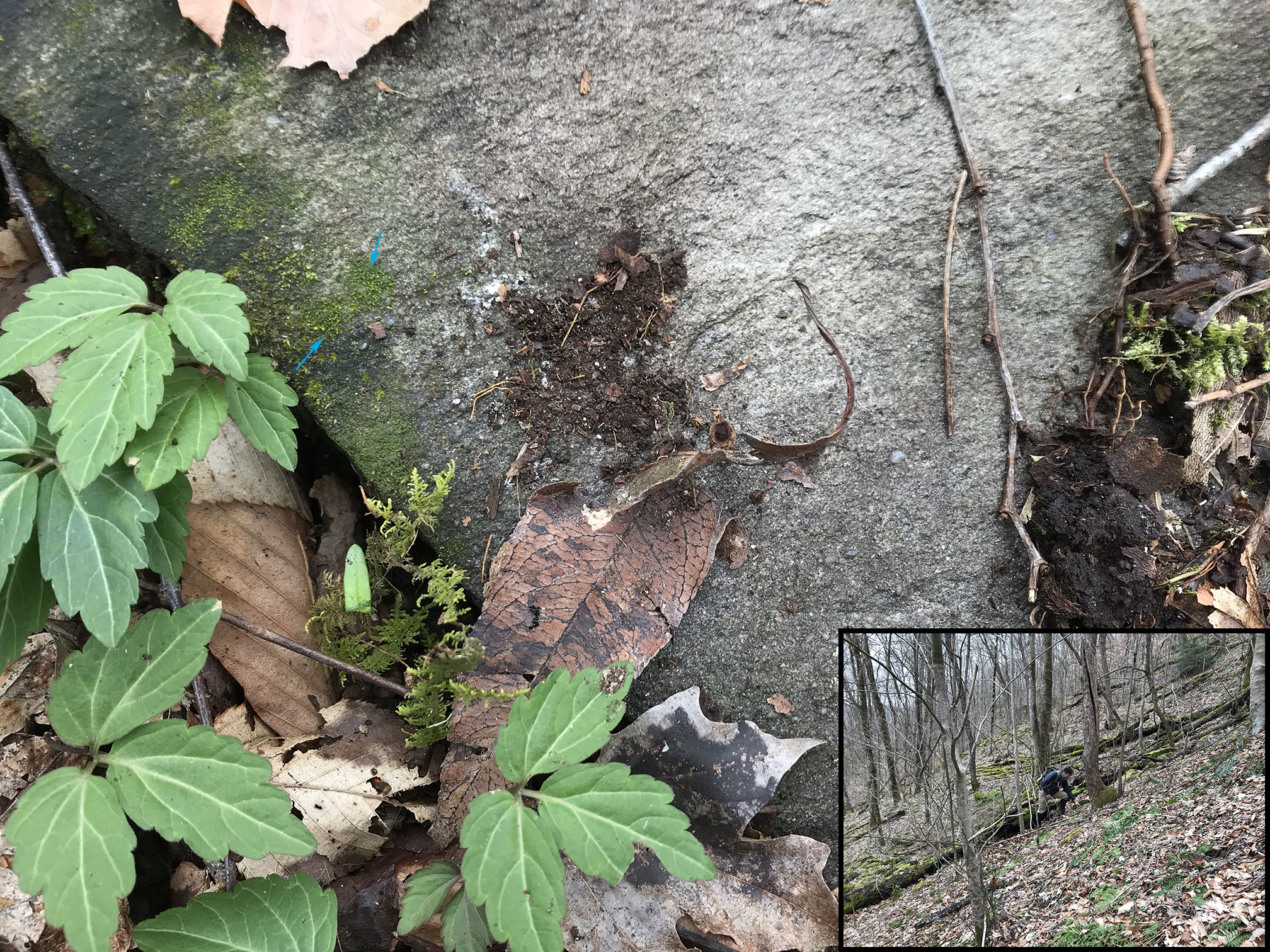
Cephaloziella spinicaulis
This rocky slope also supports Lejeunea blomquistii, though not found on the photographed rock. C. spinicaulis is limited to the small area indicated by the blue arrows. The inset shows the greater habitat in this northern hardwood forest with the location of this specific rock indicated by Matt Bushman. Just uphill beyond the photo are moist rock outcrops and boulders supporting Marsupella paroica.
Habitat
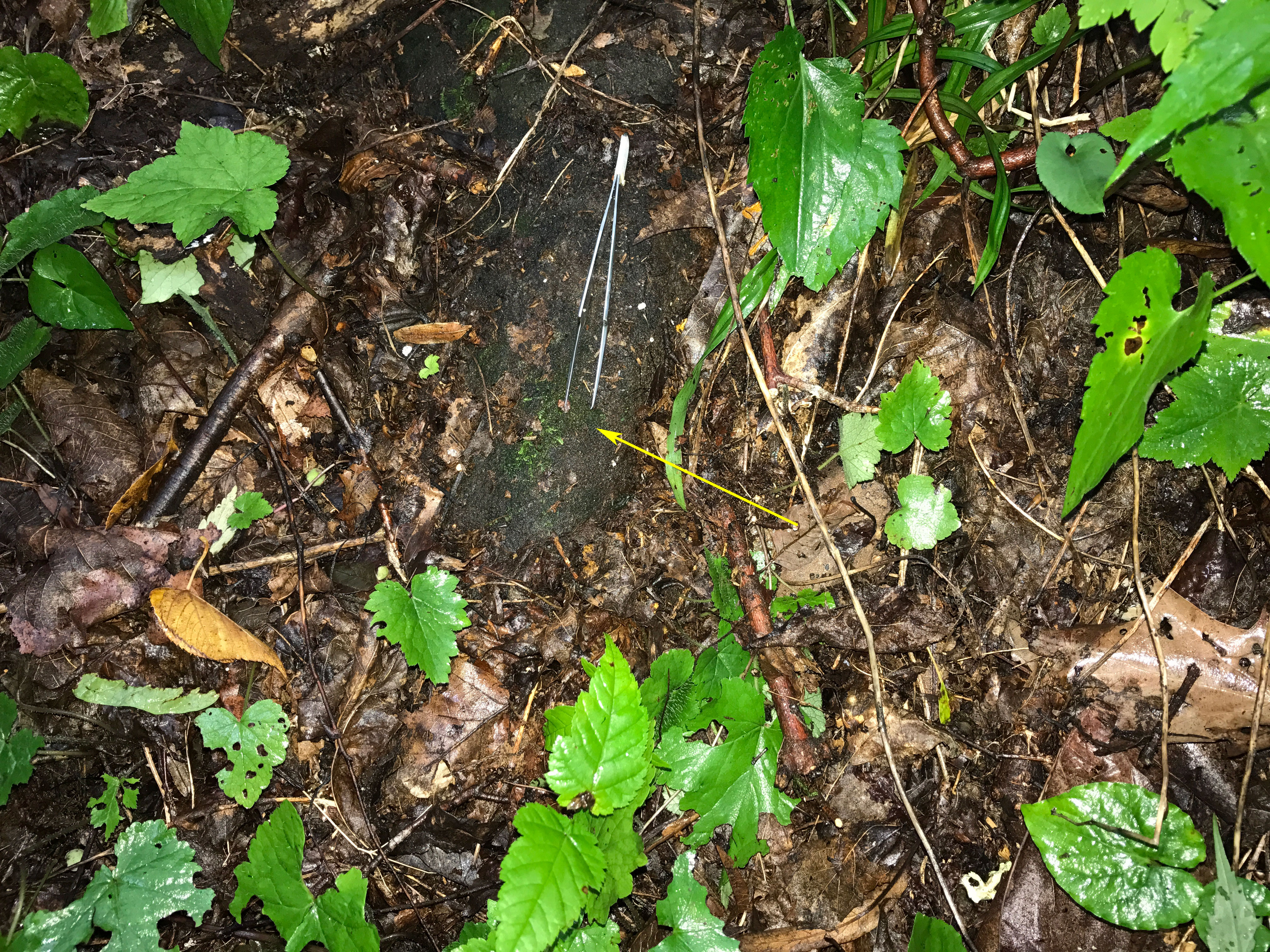
Cephaloziella spinicaulis
In the search for C. spinicaulis one learns to investigate small green patches that lack definitive mossy texture. A hand lens is required to discern whether such green patches contain liverworts, lichens, tiny mosses, or microscopic algae. See the "habit" images below for what a hand lens can reveal.
